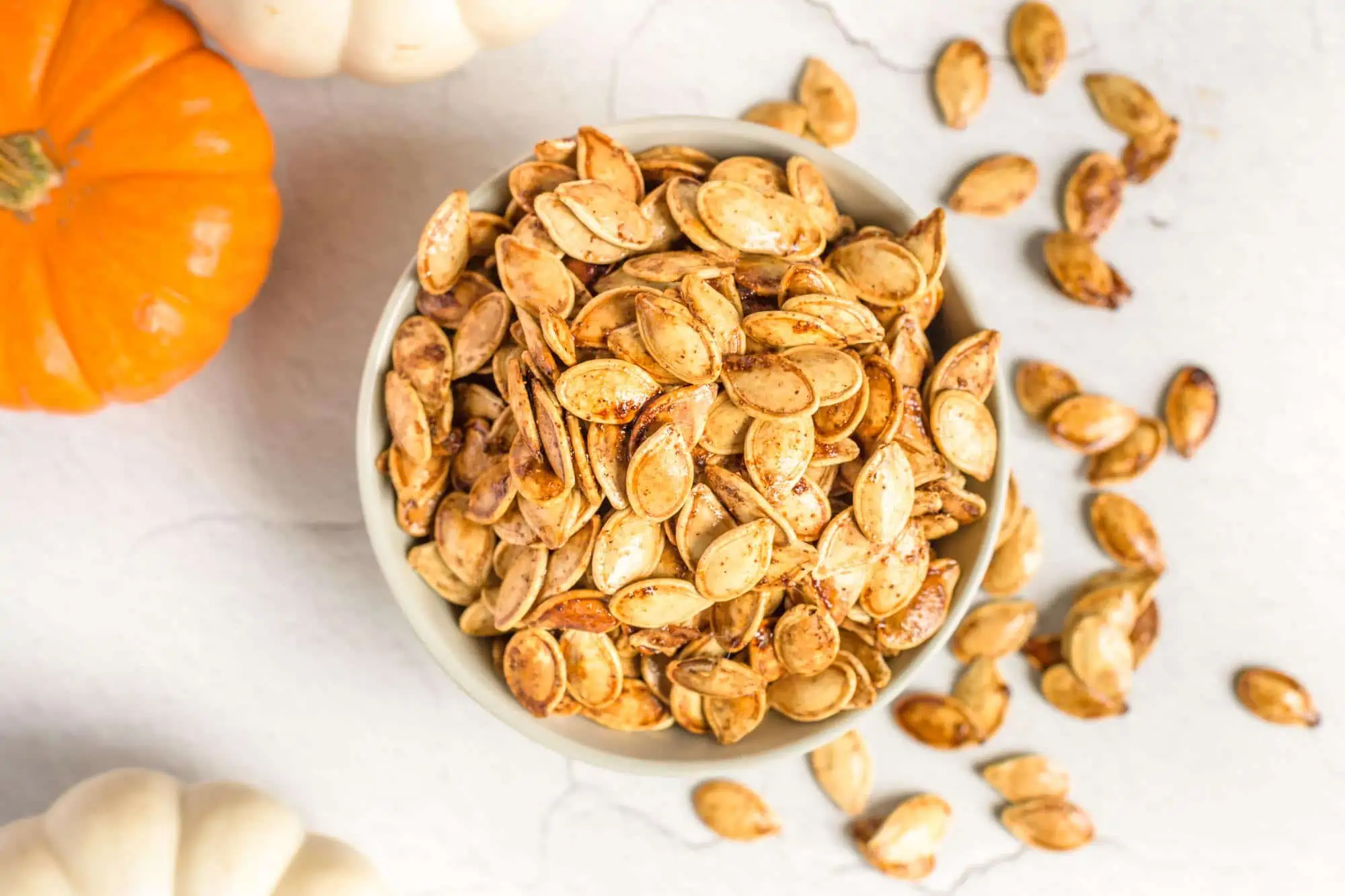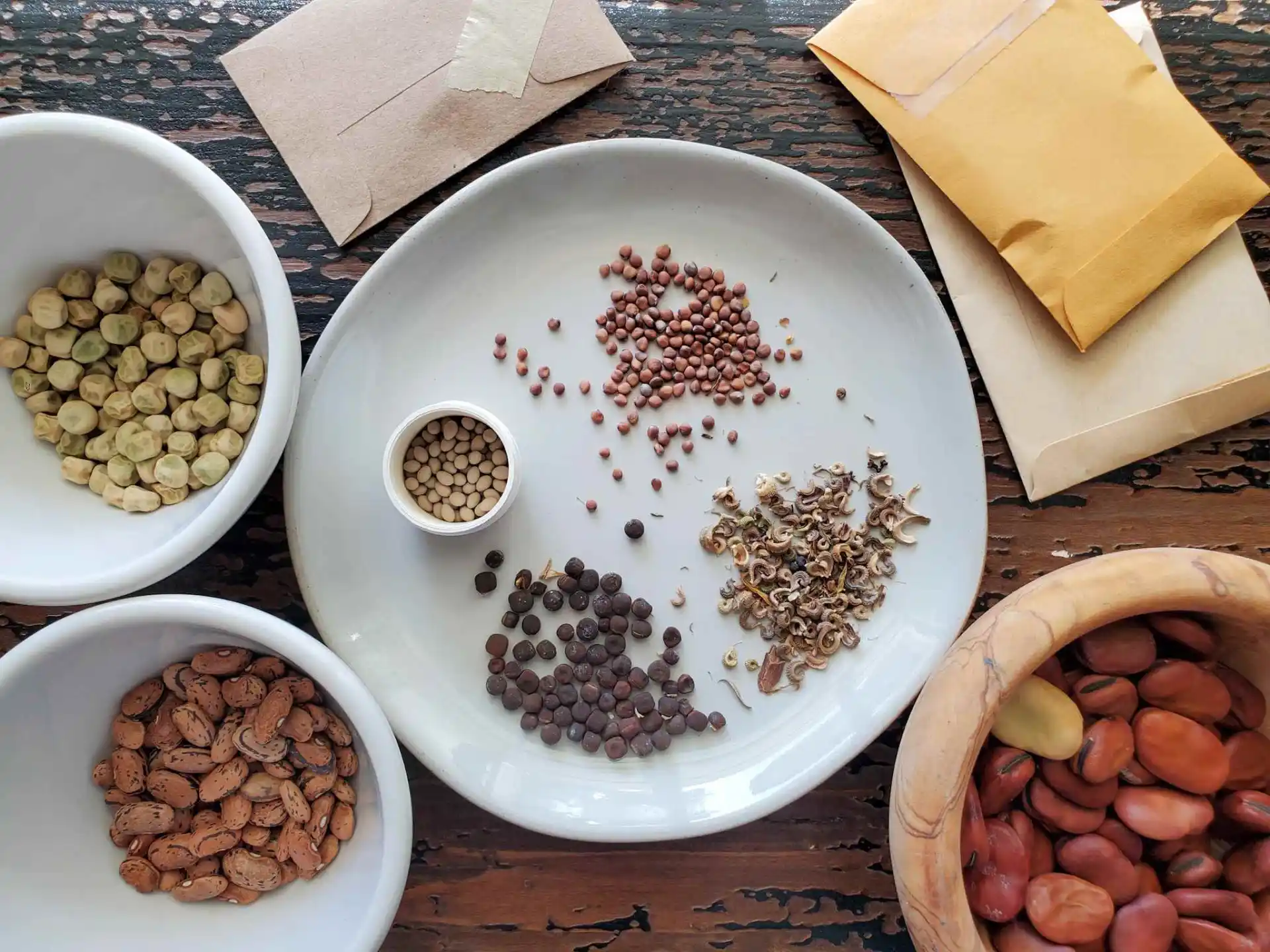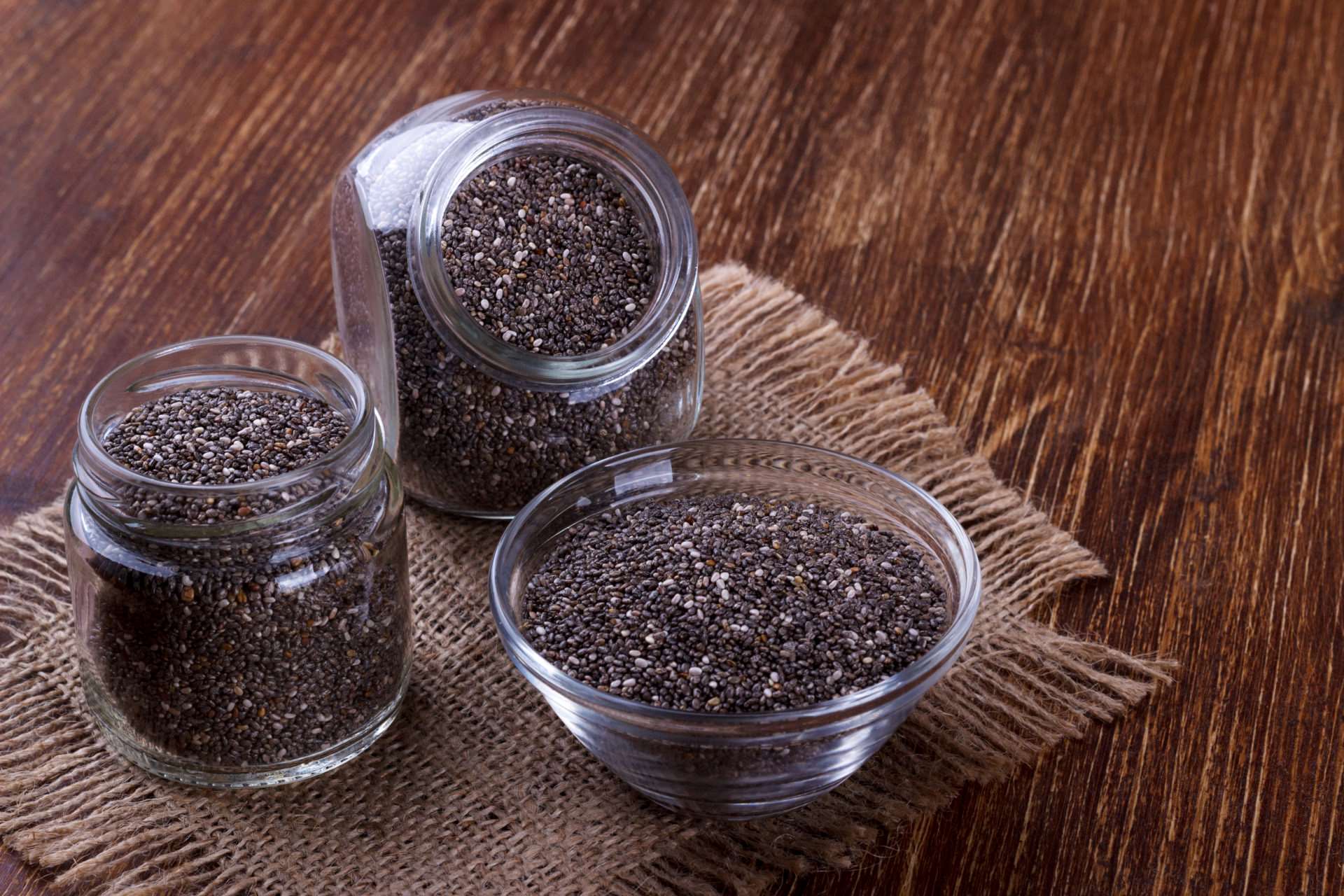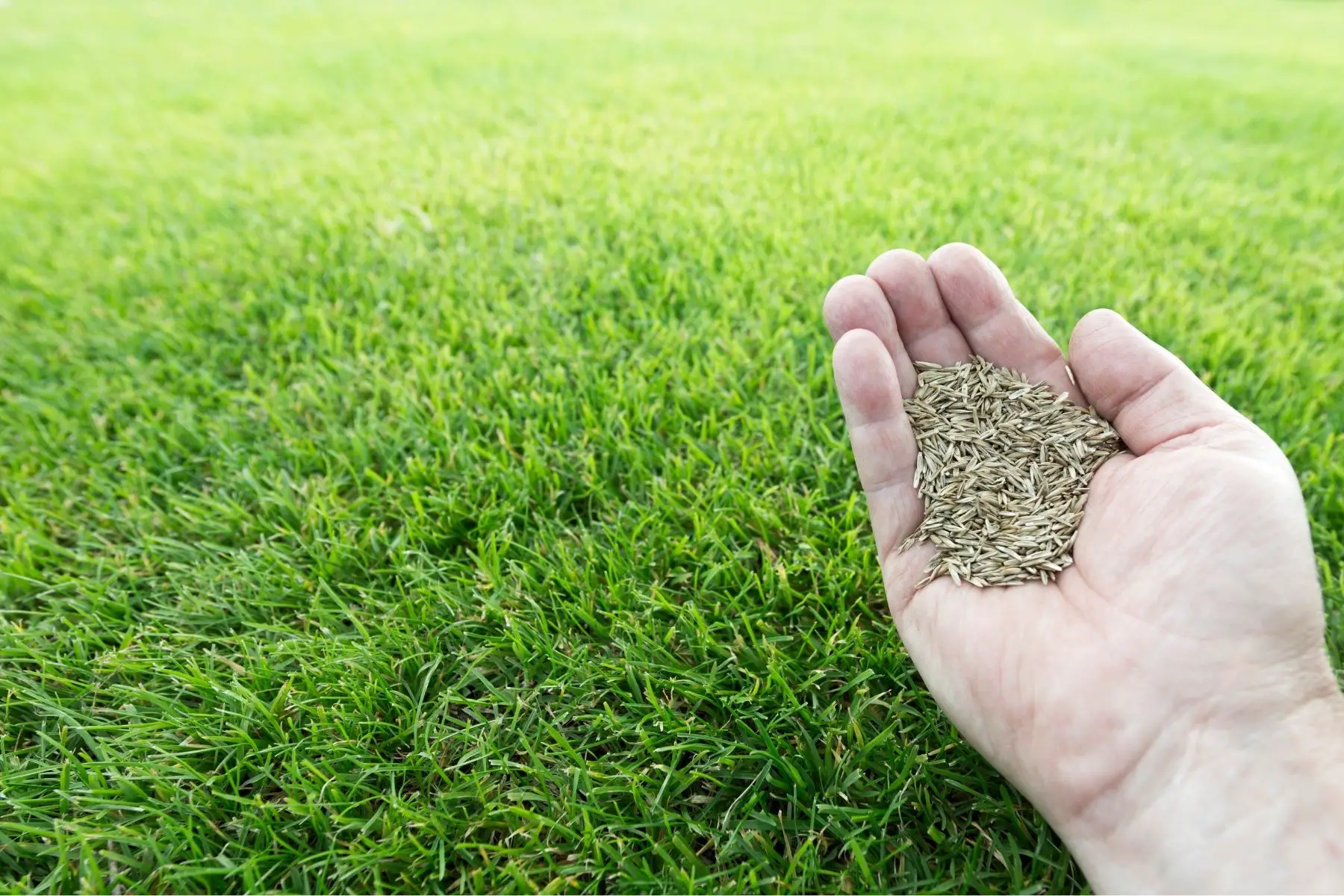Home>Types of Gardening>Ornamental Gardening>How Do Seeds Travel


Ornamental Gardening
How Do Seeds Travel
Modified: January 22, 2024
Find out how seeds travel in the context of ornamental gardening and gain insights for successful plant propagation.
(Many of the links in this article redirect to a specific reviewed product. Your purchase of these products through affiliate links helps to generate commission for Chicagolandgardening.com, at no extra cost. Learn more)
Table of Contents
Introduction
Welcome to the fascinating world of seeds and their incredible ability to travel! Plants have come up with ingenious ways to ensure the spread and survival of their offspring. Through various means of dispersal, seeds are able to travel great distances, finding new habitats and opportunities for growth. Understanding how seeds travel is not only intriguing but can also be helpful for ornamental gardeners in planning and cultivating their gardens.
Seeds, the tiny packages of future plants, carry within them the genetic potential for life. The success of a plant species depends greatly on its ability to disperse its seeds effectively. To achieve this, nature has developed several mechanisms and agents for seed dispersal. From wind to water, animals to explosions, gravity to humans, each method plays a crucial role in the dispersion of seeds across diverse landscapes.
Throughout this article, we will explore the various ways in which seeds can travel and disperse. We will discuss the natural methods employed by plants as well as the influence of human activities on seed dispersal. So, let’s embark on this journey of discovery and uncover the fascinating world of seed dispersal!
Wind Dispersal
One of the most common and efficient methods of seed dispersal is through the power of the wind. Many plants have evolved specific adaptations to take advantage of air currents to carry their seeds to new locations.
Plants that utilize wind dispersal often have lightweight and aerodynamic seeds. These seeds are equipped with structures such as wings, plumes, or hairs that act as parachutes, allowing them to be easily lifted and carried by even the slightest breeze. Examples of plants that employ wind dispersal include dandelions, maple trees, and cottonwood trees.
When the time is right, wind-dispersed plants release their seeds into the air, relying on gusts and air currents to carry them away from the parent plant. With each gust of wind, these seeds can travel impressive distances, often reaching far beyond the immediate vicinity of the parent plant.
Wind dispersal is advantageous for plants as it allows them to colonize new areas and expand their range. However, it also presents a challenge, as the success of wind dispersal relies heavily on chance and favorable environmental conditions. While some seeds may be carried far, others may only travel a short distance or not disperse at all.
In addition to natural wind dispersal, human activities can also contribute to the spread of wind-dispersed seeds. For example, the clearing of land can create open areas where wind-dispersed plants can take hold and thrive. This unintentional assistance from humans can lead to the establishment of new plants in areas where they may not have naturally occurred.
Wind dispersal is a captivating process that showcases the remarkable adaptability of plants. By harnessing the power of the wind, these plants are able to ensure the widespread distribution of their seeds, increasing their chances of survival and establishing thriving populations in diverse environments.
Water Dispersal
The ability to disperse seeds through water is another remarkable adaptation found in many plant species. By utilizing bodies of water such as rivers, lakes, and oceans, plants are able to transport their seeds over long distances.
Seeds that are adapted for water dispersal have specific characteristics that aid in their journey. These may include buoyant structures or air-filled cavities that allow them to float, or waterproof coatings that protect them from water damage. Examples of plants that utilize water dispersal methods are coconuts, willow trees, and water lilies.
When these water-dispersed plants release their seeds, they rely on natural water currents to carry them away. Seeds may be carried downstream by rivers and streams, transported by ocean currents, or simply drift along the shore. Some seeds are even able to survive long periods of time in saltwater before finding suitable conditions to germinate.
Water dispersal provides plants with the advantage of accessing new habitats that may be otherwise inaccessible. By traveling through water, seeds can reach distant locations, colonize new areas, and establish new populations. Additionally, water dispersal can help plants colonize habitats that have been disturbed by natural events such as flooding.
Human activities can also play a role in water dispersal. For example, the movement of boats and ships can inadvertently transport seeds from one body of water to another, allowing them to establish in new environments. This unintentional assistance from humans can contribute to the spread of both native and invasive plant species.
The process of water dispersal highlights the resourcefulness of plants in taking advantage of natural elements to ensure the distribution of their seeds. By hitching a ride on water currents, these plants can reach new territories and expand their presence, ultimately contributing to the biodiversity and resilience of ecosystems.
Animal Dispersal
Animals play a crucial role in seed dispersal, inadvertently aiding plants in their quest for colonization. Through various mechanisms, plants have evolved to entice animals to disperse their seeds, typically by enticing them with a reward like food. This mutually beneficial relationship between plants and animals ensures the survival and propagation of both.
Many plants have evolved fruits or seeds that are specifically adapted to attract animals. Fleshy fruits, rich in nutrients, are often consumed by animals, and the seeds are then dispersed through their waste. Examples of plants that depend on animal dispersal include berries, apples, and cherries.
Animal dispersal can also occur through seeds attaching to the fur, feathers, or scales of animals as they move through vegetation. These seeds can then be transported to new environments, sometimes over substantial distances. Burrs and other sticky structures help plants cling onto animal fur and enhance the chances of dispersal.
In some cases, plants have developed specialized adaptations to target specific animal species for seed dispersal. Brightly colored flowers and sweet nectar, for example, attract pollinators such as bees and butterflies. These pollinators inadvertently also spread the plant’s seeds as they move from one flower to another.
Birds, in particular, play a significant role in animal seed dispersal. Their ability to fly long distances and their diverse diet make them efficient distributors of seeds. Birds consume fruits and berries, digesting the pulp while the seeds pass through their digestive system unharmed. These seeds are then excreted in a new location, providing an opportunity for germination.
It is worth noting that some plants have evolved survival mechanisms to withstand digestion by animals. These seeds have hard coats or protective coverings that ensure they remain intact during the digestive process, increasing their chances of successful germination after being dispersed.
Animal dispersal of seeds not only benefits plants, but it also contributes to the diversity and stability of ecosystems. By dispersing seeds to various locations, animals help plants colonize new habitats, establish new populations, and promote genetic diversity within plant communities.
Explosive Dispersal
While it may sound like something out of an action movie, explosive seed dispersal is a fascinating method employed by certain plants to propel their seeds away from the parent plant at high speeds. This explosive force allows the seeds to be dispersed over significant distances, increasing the chances of successful germination and colonization.
Plants that use explosive dispersal typically have fruits or seed capsules with structures that undergo rapid changes in shape or tension when they reach maturity. When the time is right, these structures suddenly release their stored energy, causing the fruits or capsules to burst open and propel the seeds into the air.
One popular example of explosive seed dispersal is the touch-me-not plant, also known as the Impatiens. When the seed pods of the touch-me-not plant are touched or disturbed, they spring open and release their seeds. Similarly, the castor oil plant and witch hazel exhibit explosive dispersal mechanisms.
The force generated by explosive dispersal can be quite impressive. Some plants can launch their seeds several meters away from the parent plant, ensuring they have a better chance of finding a suitable location for germination and growth.
Explosive dispersal is advantageous for plants as it allows them to disperse their seeds quickly and efficiently, overcoming the limitations of a fixed location. By sending their seeds flying, plants reduce competition for resources and increase the chances of occupying new habitats.
Interestingly, human activities can also influence explosive seed dispersal. Disturbed habitats, such as construction sites or areas where the soil has been disturbed, can trigger the mechanisms of certain explosive plants. This can lead to the colonization of new areas that may not have been accessible to these plants naturally.
Explosive seed dispersal is a remarkable adaptation that showcases the ingenuity of plants in finding creative ways to ensure their survival and reproductive success. By harnessing the power of force, these plants overcome the limitations of their stationary nature and venture forth into new territories.
Gravity Dispersal
When it comes to seed dispersal, gravity is a force that is always at play. Gravity dispersal, also known as ballistic dispersal or simply dropping, is a passive method employed by many plants to distribute their seeds. Seeds that rely on gravity dispersal have adaptations that allow them to detach easily from the parent plant and fall to the ground.
Gravity dispersal is most commonly observed in plants with heavy or large seeds that are unable to be effectively dispersed by wind or other means. Examples of plants that employ gravity dispersal include acorns, chestnuts, and walnuts. These plants often produce fruits or capsules that protect the seeds until they are mature and ready for dispersal.
Once the fruits or capsules reach maturity, they naturally detach from the parent plant and fall to the ground under the influence of gravity. This process ensures that the seeds are deposited in close proximity to the parent plant, allowing for easier establishment and germination.
While gravity dispersal may seem like a simple and straightforward method, it also presents challenges for plants. Seeds that fall too close to the parent plant may face competition for resources, leading to reduced chances of successful germination and growth. On the other hand, seeds that are dispersed too far from the parent plant may struggle to find suitable conditions for germination.
Human activities can also influence the dispersal of seeds through gravity. For example, the clearing of land and the removal of vegetation can disrupt gravity dispersal patterns, leading to changes in the distribution of plant species. Additionally, unintentional movement of seeds by humans, such as attaching to clothing or machinery, can transport seeds to new locations where they can establish and grow.
Gravity dispersal may not be as flashy or dramatic as other methods, but it is an essential mechanism that allows plants to propagate and maintain populations. By harnessing the force of gravity, these plants can ensure the survival and dispersal of their seeds, contributing to the biodiversity and resilience of the natural world.
Human Dispersal
When it comes to seed dispersal, humans are often unintentional agents in the process. Our activities can significantly influence the distribution and spread of plant species, both intentionally and inadvertently. Human dispersal of seeds has become more prevalent as our interactions with the natural world continue to expand.
Intentional human dispersal occurs when humans intentionally transport seeds for various purposes. Gardeners and horticulturists, for example, play a vital role in the spread of ornamental plants by deliberately planting and cultivating them in new locations. Likewise, farmers sow seeds for agricultural purposes, ensuring the growth of crops in specific areas.
Inadvertent human dispersal, on the other hand, occurs when humans unknowingly transport seeds through various means. Seeds can attach themselves to clothing, footwear, or equipment, hitching a ride to new locations. This unintentional movement of seeds can lead to colonization of areas where the plant species may not have previously been present.
Human infrastructure and activities can also contribute to the dispersal of seeds. Construction, deforestation, and land clearing can disturb habitats and create new opportunities for plants to establish themselves. The movement of vehicles and machinery can dislodge seeds and transport them to different areas, sometimes far from their original location.
Invasive plant species are a prime example of the impact of human dispersal. These species are often introduced to new regions either intentionally or unintentionally and can outcompete native plants. Without natural seed dispersal mechanisms, invasive plants rely on human activity to spread and establish, often causing ecological imbalances.
It is important to be aware of the role we play in the dispersal of plant seeds and the potential impact it can have on ecosystems. We can take measures to prevent the unintentional spread of invasive species by cleaning clothing or equipment before moving between different natural areas.
Overall, human dispersal of seeds is a significant factor in the distribution of plant species, shaping the ecosystems around us. Whether intentional or unintentional, our actions can impact the natural balance, highlighting the need for responsible stewardship of our environment.
Conclusion
Seed dispersal is a remarkable natural process that ensures the survival and propagation of plant species. Through various methods such as wind, water, animals, explosions, gravity, and human activities, seeds are able to travel and colonize new habitats.
Wind dispersal allows plants to take advantage of air currents to carry their lightweight seeds over great distances. Water dispersal uses bodies of water to transport seeds, allowing them to reach new environments and colonize distant locations. Animal dispersal relies on animals to eat fruits or inadvertently carry seeds on their bodies, aiding in the dispersal process.
Explosive dispersal employs rapid changes in shape or tension to propel seeds at high speeds, increasing the likelihood of colonization in new areas. Gravity dispersal relies on the force of gravity to drop seeds to the ground, often facilitating localized establishment and germination.
Human dispersal, both intentional and unintentional, plays a significant role in the spread of seeds. Our activities, such as gardening, farming, and unintentional transport, can contribute to the distribution of plant species and the colonization of new habitats.
Understanding the various methods of seed dispersal is essential for ornamental gardeners and nature enthusiasts alike. By recognizing how seeds travel, we can make informed choices in designing gardens, promoting biodiversity, and preventing the spread of invasive species.
Seed dispersal is a testament to the ingenuity and resilience of plants. It showcases their ability to adapt and ensure the survival of their offspring by utilizing diverse means of dispersal. By exploring the extraordinary ways in which seeds travel, we can better appreciate the intricate relationship between plants, their environment, and the remarkable processes that shape our natural world.










